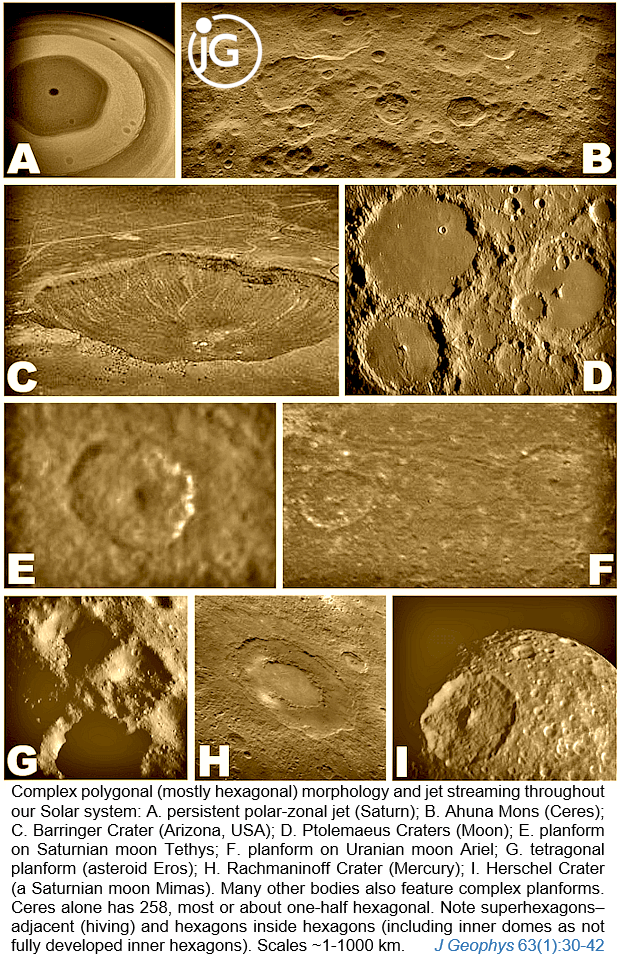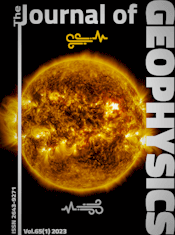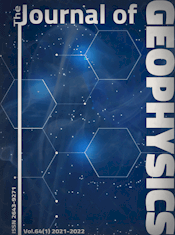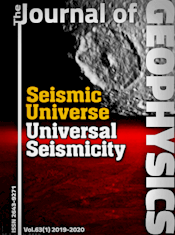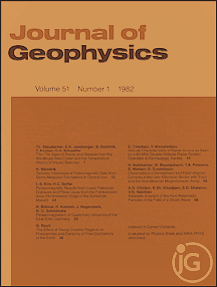Moon body resonance
Article Sidebar
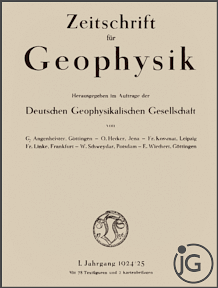
Vols. 1-18 (1924-1944), ISSN 0044-2801
Main Article Content
Abstract
The full range of 50 initial, Moon-orbit-forced superharmonic resonance periods is detected in the 1969-1977 time-series of all 12474 consecutive 0.02 Hz moonquakes from the Apollo Program catalog. The resonance is found forcing the strongest-energy (highest-fidelity) part of the 10 hours–100 days (27.78–0.115741 μHz) long-periodic band at 99–67% confidence and below. Resonance signatures of the Moon’s other four long tidal periods – synodic, anomalistic, nodical, and tropical – were also identified but not as separate drivers of body resonance. The spectra were computed using a least-squares spectral analysis method that enabled separation of the signal driver and noise signatures of all lunar tides, as well as extraction of the exact sequence of resonance periods affecting the solid Moon. As the main disruptive phase, the Moon’s orbital period introduces nonlinearity into lunar vibration and thus forces lunar seismotectonics too, giving rise to superharmonic resonance and probably the so-called free librations as well. The spatiotemporally independent computations of Earth and Moon superharmonic resonances from seismicity time-series prove that (the magnification of) macroscopic mechanical resonance is from-quantum-to-macroscopic-scales universal, and therefore as important as gravitation and fundamental forces. I propose then that some of the craters and calderas in our Solar system are petrified evidence of polygonal Faraday latticing. Finally, since only planets with one moon are susceptible to resonance plate tectonics, to prevent Earth energy overload and disintegration, a global geoengineering scheme is proposed to reassign the smaller of Martian moons, Deimos, to Earth so to attenuate Earth plate tectonics while unlocking Mars plate tectonics for natural terraforming.
 ARK: https://n2t.net/ark:/88439/x034508
ARK: https://n2t.net/ark:/88439/x034508
Permalink: https://geophysicsjournal.com/article/73
 DOI:10.5281/3376564 | online first: 24 Aug 2019 CERN
DOI:10.5281/3376564 | online first: 24 Aug 2019 CERN

Earth body resonance, 63(1):15-29

News Feature (2019). The most important scientific discovery of 2019: seismic universe. J. Geophys. 63(1):43-44
 Read the press release for this article
Read the press release for this article
Article Details
References
Alemi A., Stevenson, D. (2006) Why Venus has no moon. In: AAS/Division for Planetary Sciences Meeting Abstracts 38. Bull. Am. Astron. Soc. 38:491
Arkani-Hamed, J., Toksöz, M.N. (1984) Thermal evolution of Venus. Phys. Earth Planet. Inter. 34:232-250
Bailer-Jones, C.A.L. (2009) The evidence for & against astronomical impacts on climate change & mass extinctions: a review. Int. J. Astrobiol. 8:213-219
Baker, R.G.V., Flood, P.G. (2015) The Sun-Earth connect 3. SpringerPlus 4:285
Basilevsky, A.T., Head, J.W. (2000) Geologic Units on Venus: Evidence for Their Global Correlation. Planet. Space Sci. 48(12):75-111
Bulow, R.C., Johnson, C.L., Bills, B.G., Shearer, P.M. (2007) Temporal and spatial properties of some deep moonquake clusters. J. Geophys. Res. 112:E09003
Cazenave, A., Dobrovolskis, A., Lago, B. (1980) Orbital history of the Martian satellites with inferences on their origin, Icarus 44(3):730-744
Den Hartog, J. (1985). Mechanical Vibrations (4th ed.) Dover Publications, USA
Erlykin, A.D., Harper, D.A.T., Sloan, T., Wolfendale, A.W. (2017) Mass extinctions over the last 500 myr: An astronomical cause? Palaeontol. 60(2):159–167
Godfrey, D.A. (1988) A hexagonal feature around Saturn's north pole. Icarus 76(2):335-356
Jacoby, W.R. (2001) Successes and failures in geodynamics: from past to future. J. Geodyn. 32:3–27
Khan, A., Pommier, A., Neumann, G.A. (2013) The lunar moho and the internal structure of the Moon: A geophysical perspective. Tectonophysics 609:331-352
Lasser, J. (2019) Geophysical Pattern Formation of Salt Playa. Ph.D. dissertation, Division of Mathematics and Natural Sciences, University of Goettingen, Germany, pp. 200
Lorenz, R.D., Panning, M. (2018) Empirical recurrence rates for ground motion signals on planetary surfaces. Icarus 303:273–279
Fahnestock, E.G., Scheeres, D.J. (2008) Dynamical Characterization and Stabilization of Large Gravity-Tractor Designs. J Guid. Control Dyn. 31(3):501-521
Melosh, H.J. (1996) Impact Cratering: A Geologic Process. Oxford University Press, pp.245
Nakamura, Y., Professor Emeritus of Selenophyics, University of Texas at Austin. Personal Communication. 27-28 March 2019
Nakamura, Y., Latham, G.V., Dorman, H.J., Harris, J.E. (1981) Passive Seismic Experiment, Long Period Event Catalog, Final Version. Institute for Geophysics, University of Texas at Austin
Omerbashich, M. (2004) Earth-model discrimination method. Ph.D. Dissertation. ProQuest, pp.129
Omerbashich, M. (2006) Gauss-Vaníček Spectral Analysis of the Sepkoski Compendium: No New Life Cycles. Comp. Sci. Eng. 8:26-30
Omerbashich, M. (2007) Magnification of mantle resonance as a cause of tectonics. Geod. Acta 20(6):369-383
Omerbashich, M. (2008) Stochastic resonance for exploration geophysics. arXiv:0810.5708
Omerbashich, M. (2019a) Earth body resonance. J. Geophys. 63(1):15-29
Omerbashich, M. (2019b) On solar origin of alleged mass-extinction periods in records of natural data. (A.Y. Rozanov, Ed.) Paleontol. J. In press
Otto, K.A. et al. (2016) Origin and distribution of polygonal craters on Ceres. Proceedings of 47th Lunar & Planetary Science Conference, Houston TX, USA
Pikovsky, A., Rosenblum, M., Kurths, J. (2001) Synchronization: A Universal Concept in Nonlinear Sciences (Vol. 12). Cambridge University Press
Press, W.H., Teukolsky, S.A., Vetterling, W.T., Flannery, B.P. (2007) Numerical Recipes: The Art of Scientific Computing (3rd ed.). Cambridge University Press
Seidelmann, P. (1992) Explanatory Supplement to the Astronomical Almanac. A revision to the Explanatory Supplement to the Astronomical Ephemeris and the American Ephemeris and Nautical Almanac. Mill Valley, CA, USA. University Science Books
Smith, A.B. (2007) Marine diversity through the Phanerozoic: problems & prospects. (Bicentennial Review.) J. Geol. Soc. 164(4):731-745
Stevenson, D.J. (1983) Planetary magnetic fields. Rep. Prog. Phys. 46:555-620
Stevenson, D.J. (2008) A planetary perspective on the deep Earth. Nature 451:261‐265
Strom, R.G., Schaber, G.G., Dawson, D.D. (1994) The global resurfacing of Venus. J. Geophys. Res. 99(E5):10899-10926
Thévenin, J., Romanelli, M., Vallet, M., Brunel, M., Erneux, T. (2011) Resonance Assisted Synchronization of Coupled Oscillators: Frequency Locking without Phase Locking. Phys. Rev. Let. 107:104101-1-5
Tse, D.P., Rucklidge, A.M., Hoyle, R.B., Silber, M. (2000) Spatial period-multiplying instabilities of hexagonal Faraday waves. Physica D: Nonlin. Phenom. 146(1-4):367-387
Van Dijk, T., Kistemaker, J. (1981) A New Explanation for the Hexagonal Shape of Lunar Craters. Z. Naturforsch. 36a:410-412
Vaníček, P. (1969) Approximate Spectral Analysis by Least-Squares Fit. Astrophys. Space Sci. 4(4):387–391
Vaníček, P. (1971) Further Development and Properties of the Spectral Analysis by Least-Squares Fit. Astrophys. Space Sci. 12(1):10–33
Yang, J.H., Sanjuán, M.A.F., Liu, H.G. (2016) Vibrational subharmonic and superharmonic resonances. Comm. Nonlin. Sci. Num. Sim. 30(1-3):362–372
Yin, A. (2012) Structural analysis of the Valles Marineris fault zone: Possible evidence for large-scale strike-slip faulting on Mars. Lithosphere 4(4):286–330.


